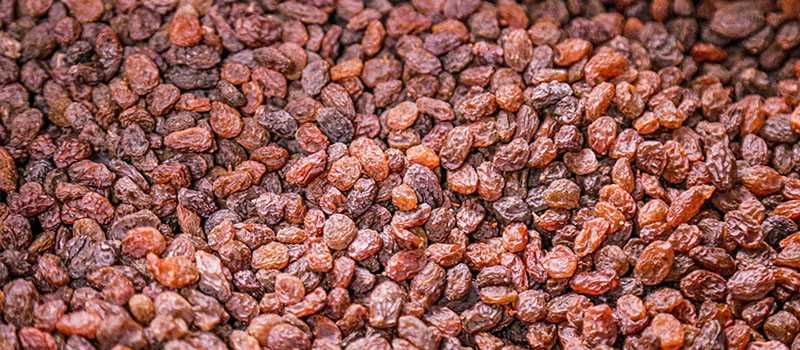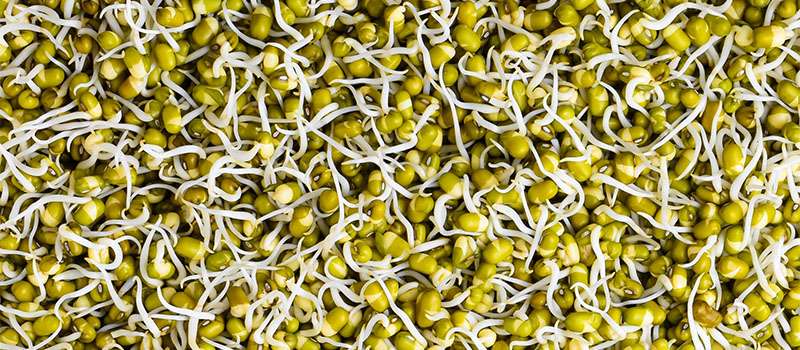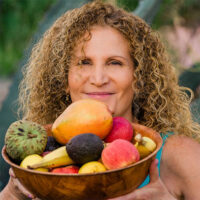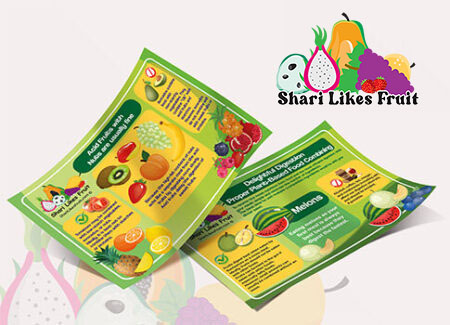Ferritin and Iron for Vegans: A Guide to Maintaining Optimal Iron Levels on a Plant-Based Diet
Looking for ways to get enough iron on a raw vegan or vegan diet?
Discover top plant-based sources of iron and learn tips on how to boost your iron absorption.
Say goodbye to iron-deficiency anemia and hello to a healthy, balanced diet with our expert advice.
One common question that comes up frequently in the raw vegan diet is about ferritin levels, specifically low ferritin levels, which indicate inadequate iron stores in the body.
We will explore the importance of iron, the challenges vegans may face in maintaining optimal ferritin levels, and practical tips to increase iron absorption from plant-based sources.
What’s the Big Deal about Ferritin and Iron?
Iron is a crucial mineral that plays a vital role in our bodies. It is responsible for transporting oxygen throughout our body, supporting red blood cell formation, metabolic processes, and DNA synthesis.
Ferritin is the iron storage protein in our bodies, and low ferritin levels may indicate inadequate iron stores, though not necessarily a full-blown iron deficiency.
The Recommended Dietary Allowance (RDA) for iron is 18 mg for adult females up through menopause and around 10 mg for adult males and postmenopausal females.
Heme Iron vs. Non-Heme Iron
Non-heme iron, which is the type of iron found in plant-based sources, is not as bioavailable as heme iron, which is found in animal-based sources.
This means that vegans and other plant-based individuals may need to consume more than the RDA of iron to account for the lower bioavailability of non-heme iron.

One of the primary challenges for plant-based eaters is the lower bioavailability of iron from plant-based sources. Non-heme iron, which is found in plant-based foods, is not as easily absorbed by the body compared to heme iron from animal-based foods.
This means that even if you consume iron-rich plant-based foods, you may still be at risk of low ferritin levels if you do not take steps to optimize iron absorption.
However, Matt Bennett says the following about non-heme iron:
“Iron from animal products is referred to as heme iron and is absorbed into the body in a much less controlled fashion.
Consuming heme iron puts a person at a higher risk of iron overload, resulting in increased oxidative damage and chronic disease over time. This is why non-heme iron is the ideal form of iron to consume for long-term health and longevity.”
Matt Bennett from MyRawIntuition.com
I highly recommend his books for anything related to nutrients and transitioning to a raw vegan diet.
Boosting Iron Absorption with Vitamin C
Plant-based (non-heme) iron is highly absorbable when paired with vitamin C-rich foods. Adding vitamin C can increase iron absorption up to sixfold! Try these simple combinations:
- Sprouted lentils + bell peppers
- Pumpkin seeds + citrus fruits
- Spinach salad + strawberries or oranges
- Sunflower microgreens + fresh lemon juice
💡 Pro Tip: Blending iron-rich foods with fruits like pineapple, kiwi, or mango in a smoothie is an easy way to enhance absorption!
What Causes Low Ferritin Levels?
There are several factors that can contribute to low ferritin levels in vegans and other individuals, including menstrual losses in females, iron losses in sweat during heavy exercise, and inadequate intake of iron-containing foods due to disordered eating.
Other factors include dieting, high activity levels, and consuming iron-rich foods with foods or beverages that can impair iron absorption, such as coffee, tea, red wine, calcium-rich foods, and calcium supplements. Additionally, health conditions such as Celiac Disease and Crohn’s Disease can also affect iron absorption.
What About Ferritin Levels on a Raw Vegan Diet?
Ferritin is a storage form of iron, and many vegans naturally have lower ferritin levels. While some assume this means deficiency, research suggests that lower ferritin can reduce inflammation and oxidative stress. Studies even link high ferritin levels to metabolic syndrome risks.
💡 Should You Worry?
- If you feel energized and symptom-free, a lower ferritin level might be perfectly healthy!
- If you struggle with fatigue, dizziness, or frequent illness, it’s worth testing your ferritin and adjusting your diet.
📌 Check Your Levels: Consider getting bloodwork to assess ferritin, hemoglobin, and total iron-binding capacity (TIBC).
Ways to Raise Ferritin Levels on a Raw Vegan Diet
Fortunately, there are several practical strategies that can help vegans and plant-based individuals optimize their ferritin levels:
- Pair iron-rich vegan foods with a vitamin C source: Vitamin C enhances the absorption of non-heme iron from plant-based foods. Some examples of iron-rich (cooked) vegan foods include lentils, tempeh, tofu, kale, cashews, pumpkin seeds, quinoa, and leafy greens. And for raw vegan sources of iron, there are sprouted lentils, “raw” cashews, sundried raisins, raw pumpkin seeds, sprouted quinoa, kale, and leafy greens. Pairing these iron-rich foods with a vitamin C source, such as oranges, bell peppers, broccoli, or berries, can significantly improve iron absorption.
- Avoid consuming iron-rich meals with coffee or tea: Tannins present in coffee and tea can inhibit iron absorption from plant-based foods. It’s best to consume iron-rich meals at least 1.5 hours away from coffee or tea to optimize iron absorption. If you haven’t quit caffeine, here is your motivation!
- Avoid consuming iron-rich foods with calcium-rich foods or supplements: Calcium can interfere with iron absorption, so it’s recommended to space out consumption of calcium-rich foods and iron-rich plant-based foods by a few hours.
- Cast iron skillet: This suggestion may be perceived as controversial. For vegans who heat-process their food, some dieticians recommend cooking meals in a cast iron skillet, which can increase the iron content of the food, as some of the iron from the skillet can be absorbed during cooking. I personally choose not to utilize this method.
- Iron or Ferritin Supplements: For those open to supplementation, consult a qualified healthcare provider or naturopath for proper guidance.
There are plenty of ways to ensure adequate iron intake and maintain healthy ferritin levels with a whole food, raw vegan diet without needing supplementation. But it’s an option.

By incorporating iron-rich plant-based foods into your diet and pairing them with vitamin C sources, you can enhance iron absorption in your body.
Some examples of raw foods rich in iron:
Sprouted Lentils – 1 cup = 2.5 mg.
Sunflower Microgreens – 1 cup – 6 mg.
Pumpkin Seeds – 1 cup – 3-4 mg.
Raisins – 1 cup – 3.1 mg.
Beet Root – 1 cup = 2.9 mg.
Here are some more!
– Cronometer
- Cacao nibs or raw cacao powder – 1 ounce = 7 mg iron
- Sun-dried tomatoes – 1 cup = 5 mg iron
- Dulse (seaweed) – naturally high in iron and iodine – per 100 grams (3.5 ounces) – iron content varies based on sourcing and processing methods – 33 mg of iron – approximately 183% of the Daily Value (DV) – 113–127 mg of iron – recent analyses of wild and cultivated dulse samples have shown iron levels as high as 113 to 127 mg per 100 grams – per 7 grams (approximately ⅓ cup of whole leaf dulse) – contains about 14% of the Recommended Dietary Intake (RDI) for iron*
- Blackstrap molasses (small amounts for raw vegans comfortable with it) – 1 tablespoon (20g) of blackstrap molasses contains about 3.6–4.7 mg of iron, which is roughly 20-26% of the daily recommended intake (DRI) for women and even more for men
- Raw coconut flakes – a surprising source of plant-based iron – per 100 grams, approximately 2.4 mg of iron, providing about 13% of the Daily Value (DV)
- Per 15 grams (approximately 1 tablespoon) – contains around 0.36 mg of iron
Simple, Iron-Boosting Raw Vegan Meals
Here are examples of raw vegan meals with iron:
🥗 Iron-Rich Power Salad: Spinach, sunflower microgreens, sun-dried tomatoes, hemp seeds, lemon dressing.
🍫 Raw Cacao Smoothie: Cacao, frozen banana, chia seeds, almond milk, dates.
🌯 Nori Wraps: Avocado, lentil sprouts, grated beets, dulse flakes.
🍓 Berry-Boosted Oats: Sprouted oats, mulberries, dried thyme, coconut flakes.
And remember, be mindful of not consuming iron-rich foods with coffee, tea, calcium-rich foods, or calcium supplements.
7-Day Raw Vegan Iron-Rich Meal Plan
- Day 1
- Breakfast: Green smoothie with spinach, kale, banana, and homemade raw almond “milk” (you can blend one cup of soaked, organic raw almonds with 3-4 cups spring or distilled water, then strain through a cheesecloth)
- Lunch: Large salad with romaine lettuce, spinach, tomatoes, cucumbers, bell peppers, sunflower seeds, and a lemon, date, basil, and sesame seed dressing
- Dinner: Raw vegan nori rolls with marinated mushrooms, carrots, zucchini, and avocado
- Day 2
- Breakfast: Raw oats (or soaked and sprouted buckwheat) with berries, nuts, and seeds
- Lunch: Raw vegan sushi bowl with soaked and “sunned” bloomed wild rice, sprouted lentils, shredded carrots, spiralized cucumber, and organic, ripe avocado
- Dinner: Raw vegan pad thai with kelp noodles, zucchini, carrots, and a tahini-ginger sauce
- Day 3
- Breakfast: Smoothie with spinach, kale, banana, and almond milk
- Lunch: Large salad with romaine lettuce, spinach, tomatoes, cucumbers, bell peppers, sunflower seeds, and a tahini or sesame seed-based dressing
- Dinner: Raw vegan “lasagna” with zucchini noodles, marinara sauce, and cashew “cheese”
- Day 4
- Breakfast: Raw, sprouted buckwheat with berries, ground flax, and a small amount of raw nuts or seeds
- Lunch: Raw vegan tacos with walnut “meat” (basically blended raw walnuts and sundried tomatoes and spices), lettuce, tomatoes, and salsa
- Dinner: Raw vegan pizza with a dehydrated cauliflower or vegetable crust, marinara sauce, and cashew cheese
- Day 5
- Breakfast: Smoothie with spinach, kale, banana, and almond milk
- Lunch: Large salad with romaine lettuce, spinach, tomatoes, cucumbers, bell peppers, sunflower seeds, and any favorite raw vegan dressing
- Dinner: Raw vegan stuffed peppers with soaked and sprouted quinoa (or bloomed wild rice) and vegetable filling
- Day 6
- Breakfast: Raw, organic, sprouted buckwheat with berries, a tablespoon of shredded coconut, and a small amount of raw seeds (test your digestion slowly when mixing fats and fruit)
- Lunch: Raw vegan curry with cauliflower rice, sprouted chickpeas, and marinated and dehydrated vegetables
- Dinner: Raw vegan enchiladas with dehydrated corn tortillas, sprouted black lentils, and a cashew cream sauce
- Day 7
- Breakfast: Smoothie with spinach, kale, banana, and almond milk
- Lunch: Large salad with romaine lettuce, spinach, tomatoes, cucumbers, bell peppers, small handful of sunflower seeds, and your favorite raw vegan dressing
- Dinner: Raw vegan shepherd’s pie with a sprouted lentil and vegetable filling and a mashed cauliflower topping
10 Easy and Delicious Raw Vegan Iron-Rich Meals
- Green smoothie with spinach, kale, banana, and almond milk
- Large salad with romaine lettuce, spinach, tomatoes, cucumbers, bell peppers, sunflower seeds, and a lemon-date-herb-raw nut dressing
- Raw vegan nori rolls with marinated mushrooms, carrots, zucchini, and avocado
- Raw oatmeal or sprouted buckwheat with berries, nuts, and/or seeds
- Raw vegan sushi bowl with bloomed rice, edamame, carrots, cucumber, and avocado
- Raw vegan pad thai with kelp noodles, zucchini, carrots, and a tahini-ginger sauce
- Raw vegan lasagna with zucchini noodles, marinara sauce, and cashew cheese
- Raw vegan tacos with walnut “meat,” lettuce, tomatoes, and salsa
- Raw vegan pizza with a cauliflower crust, marinara sauce, and cashew cheese
- Raw vegan stuffed peppers with sprouted quinoa (or bloomed rice) and vegetable filling
These are just a few ideas to get you started. There are many other delicious and nutritious raw vegan meals that you can enjoy. Be creative and experiment with different ingredients to find what you like best.
Additional Tips
- Use a variety of iron-rich foods in your meals and snacks.
- Pair iron-rich foods with a source of vitamin C to improve absorption. But don’t sweat it. When eating a varied, delicious, raw vegan diet, you will likely pair things up just fine.
- Avoid consuming iron-rich meals with coffee or tea, as these beverages can inhibit iron absorption. Caffeine is not great for health, anyway.
- Soak and sprout nuts and seeds to increase the bioavailability of iron.
- Use cast iron cookware to increase the iron content of your food. But do your research. Some people are apprehensive about cast iron cookware.
So, Do You Really Need Iron Supplements?
An iron supplement may be necessary, especially if iron levels are depleted.
However, it’s important to work with a healthcare provider to determine the right dosage and timing for supplementation and to regularly monitor iron levels through blood tests.
Remember, maintaining adequate ferritin levels is crucial for overall health, as iron plays a vital role in various bodily functions. It’s essential to be proactive in ensuring sufficient iron intake, especially for those following a raw vegan or plant-based diet, to prevent iron deficiency and associated health issues.
Usual disclaimer: It is important to talk to your doctor before making any major changes to your diet, especially if you are pregnant, breastfeeding, or have any health concerns.
Conclusion
If you’re a raw vegan or plant-based eater and have concerns about your ferritin levels or iron intake, there are practical steps you can take to optimize your iron status.
Incorporate iron-rich plant-based foods into your diet, pair them with vitamin C sources, avoid consuming iron-rich foods with substances that inhibit iron absorption, and work with a naturopath or qualified, plant-based healthcare provider if iron supplementation is needed.
See our other posts for more answers to the most common raw vegan FAQs.
Sources
- National Institutes of Health (NIH) Office of Dietary Supplements
- Academy of Nutrition and Dietetics
- World Health Organization (WHO)
- MyRawIntuition.com
- Vegan Society
- Vegetarian Resource Group
- American Journal of Clinical Nutrition
- Journal of the American Dietetic Association
- PubMed
- Maine Coast Sea Vegetables
These sources are reputable and widely recognized for their evidence-based information on nutrition, health, and dietary guidelines.
For personalized nutrition advice, it’s always recommended to consult trusted sources and seek guidance from qualified healthcare professionals or registered dietitians.
*While dulse is a potent source of iron and other minerals, it’s important to consume it in moderation due to its high iodine content, which can impact thyroid function if consumed excessively. Additionally, individuals with seafood allergies should exercise caution when introducing seaweeds like dulse into their diet.









Gracias 🙏
Thanks, Melissa! I’ll be updating this more soon, I have a bunch of notes to incorporate. I appreciate your reminder – so happy you’re here. xo